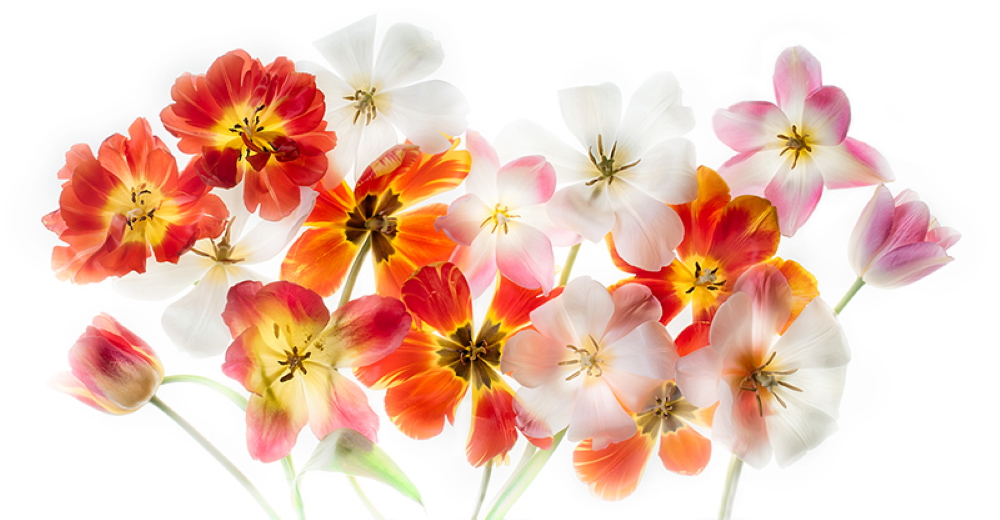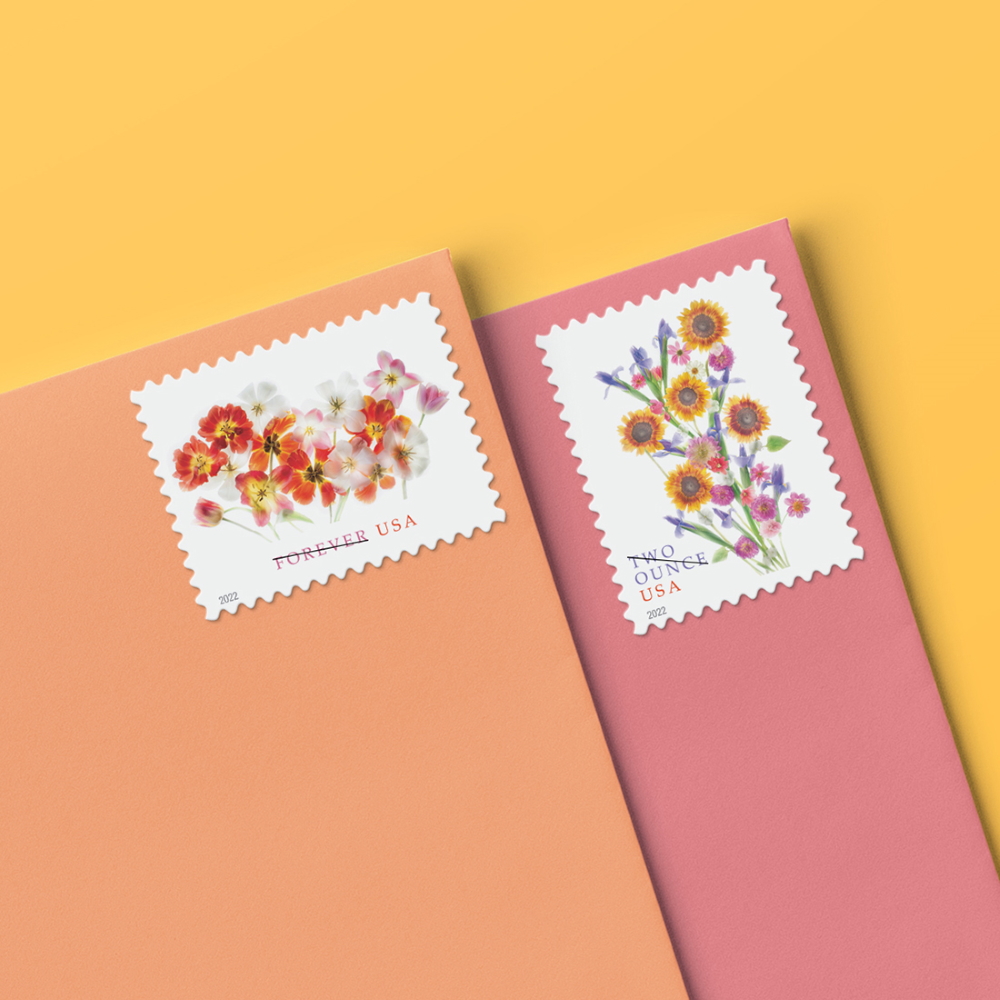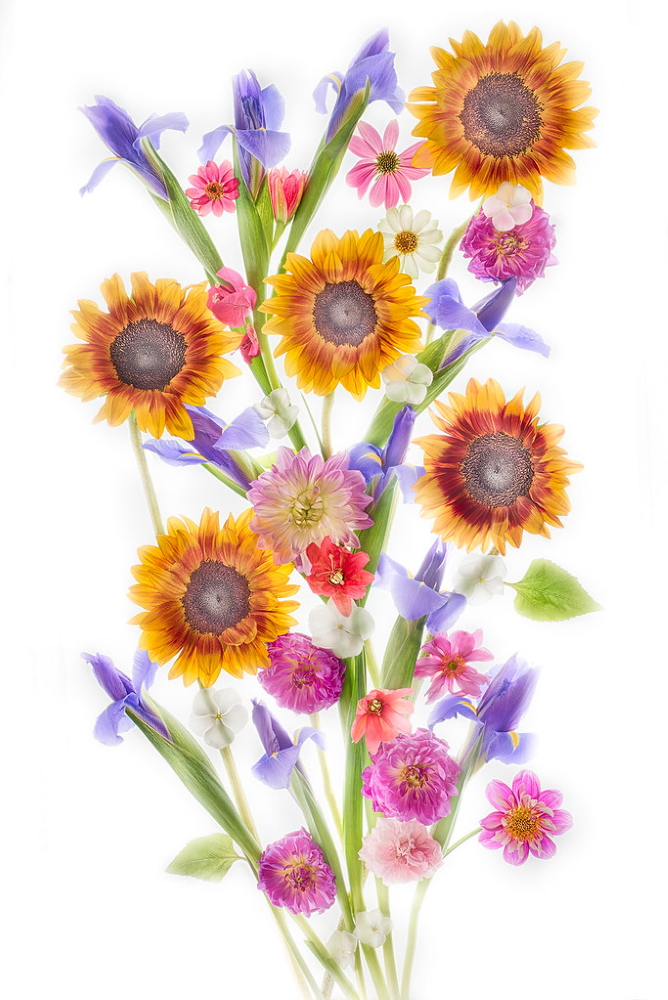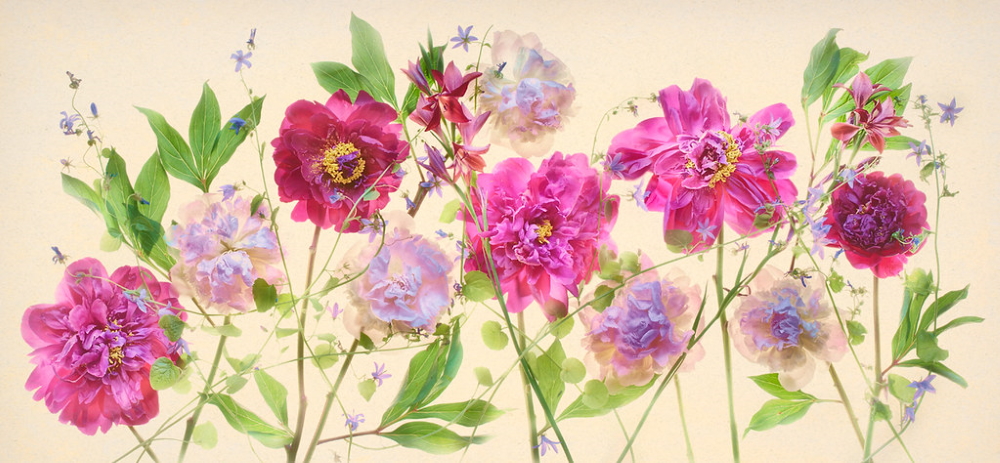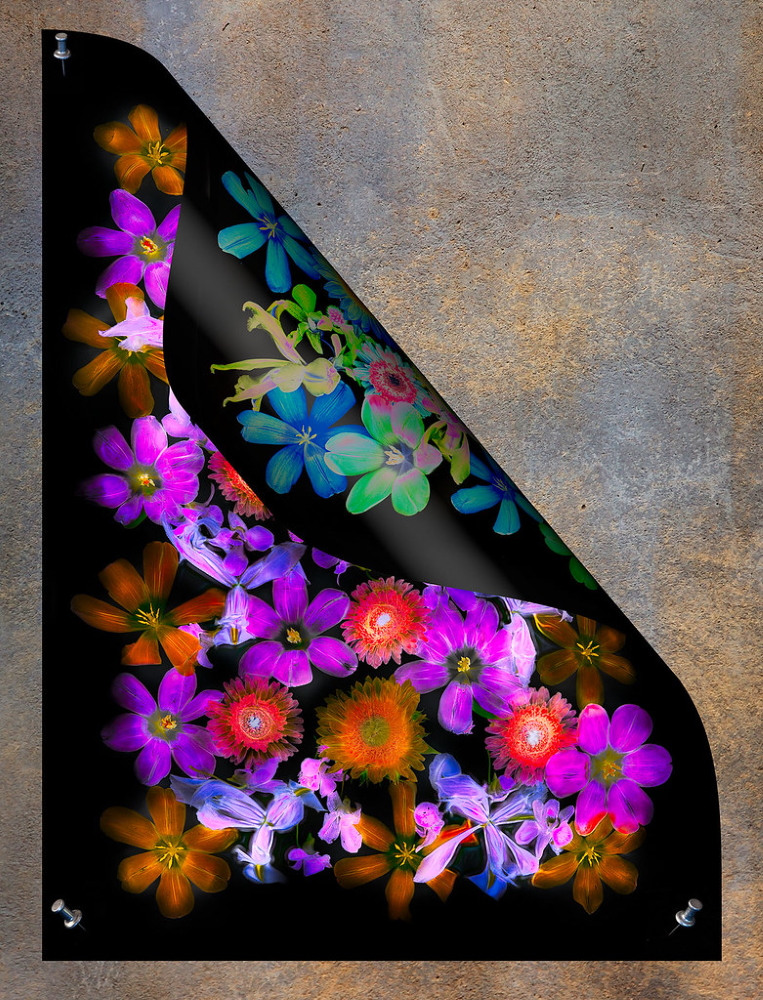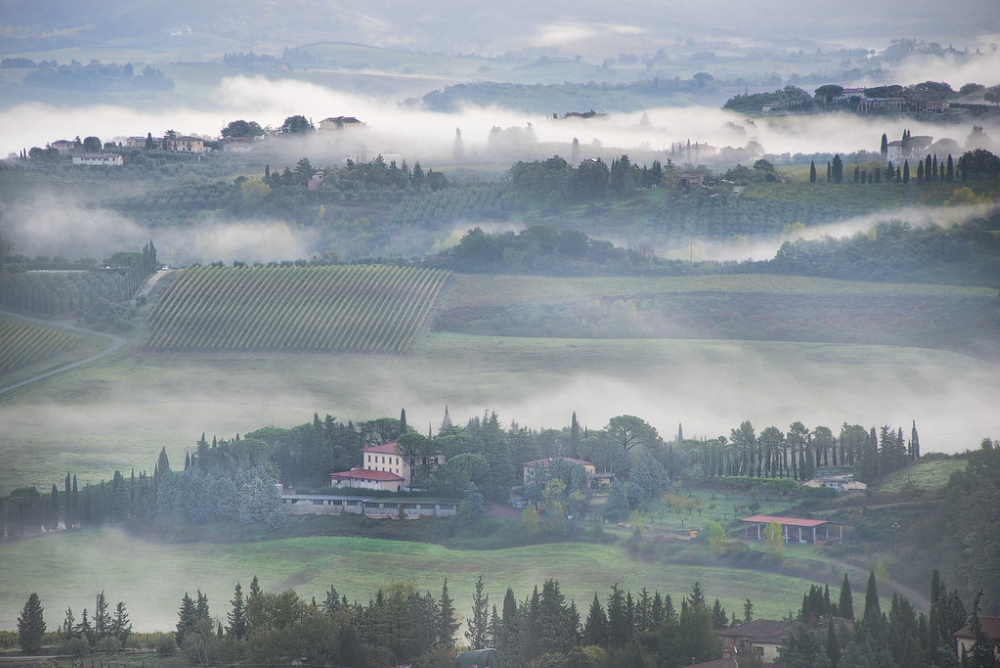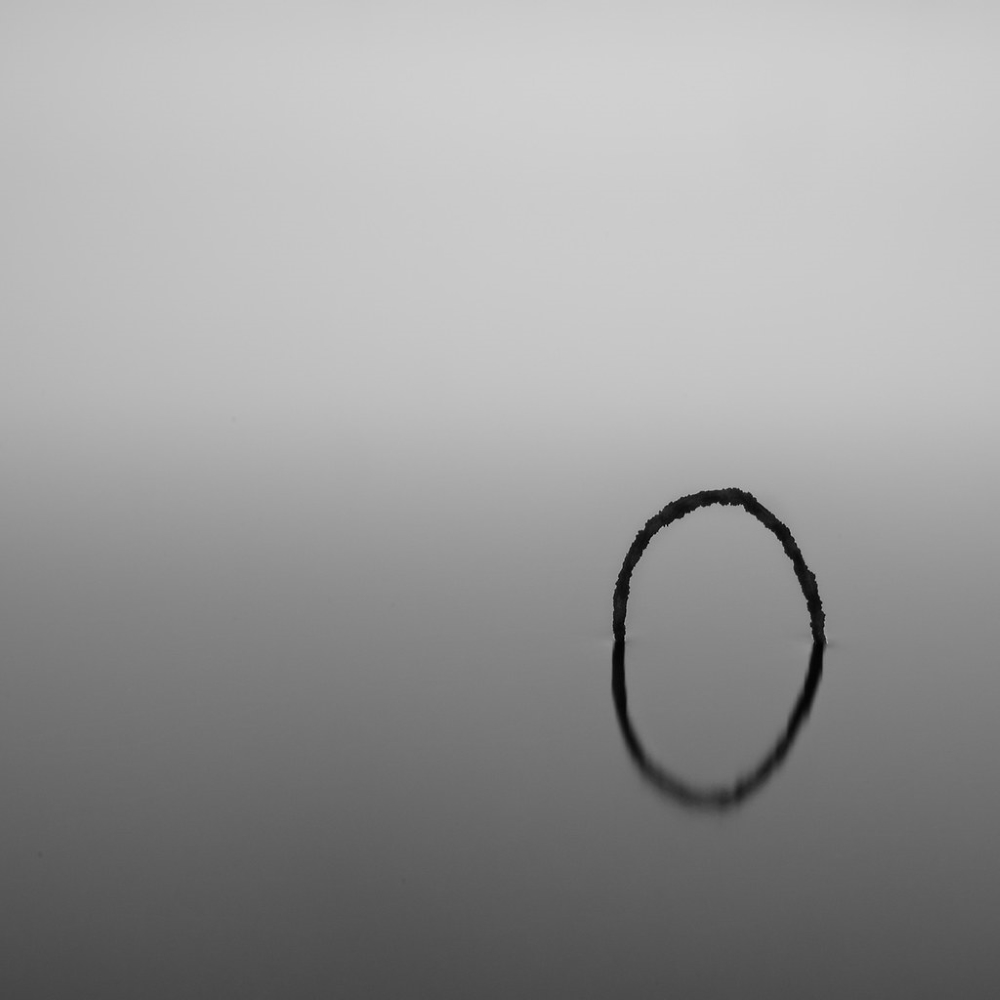Harold Davis
post-film digital photographer & writer
US
The United States Postal Service depicted two of his beautiful photos for a stamp-edition in 2022: Sunflower Bouquet and Tulips Forever! These „ethereal floral arrangements have“, according to Popular Photo Magazine, „a purity and translucence that borders on spiritual.” This high-quality-look originates in an invention the maker got the Photographic Society of America Progress Award 2022 "for the development of a high key digital workflow (HDR) and set of techniques involving specific kinds of back lighting that make it possible to create luminous translucent imagery." But that‘s not the only new technique Harold Davis developed: he created a complete new medium where digital painting, digital photography plus latest technology fuse and result in something that didn’t exist before!
Harold Davis
post-film digital photographer & writer
US
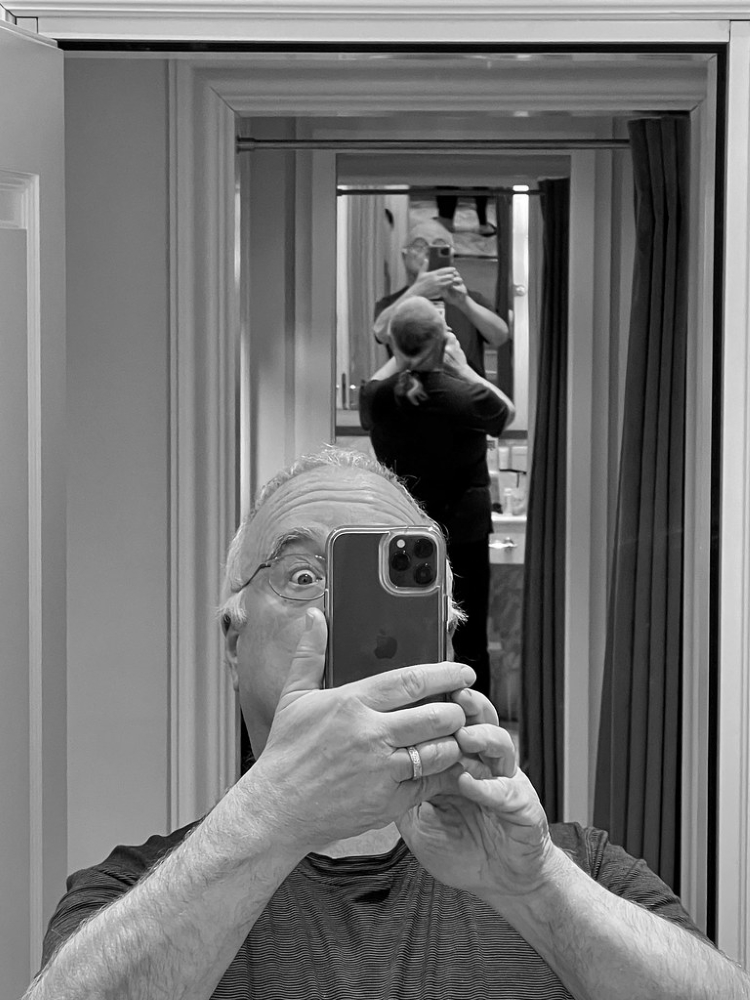
“Davis is a pioneer in a new art form — part photographer, part digital illusionist. He sees software and computer monitors as the new paintbrush and canvas“, confirms Rangefinder. „Davis is recognized for his night photography with its experimental ultra-long exposure techniques, vibrant and saturated colors, and composition“, states the professional photography magazine. „He’s also a master of what he calls the impossible image: photo composites that appear realistic, but upon closer inspection are surreal or manifestly impossible in the real world. A third theme is his creative florals and biological images which are often combined with digital painting to create pleasing, unusual effects.”
The basis for what Harold Davis (* 1953 in Princeton, New Jersey) is famous for now was put into his cradle more or less. At the age of five his parents, a mathematician and a fiber artist, gave him a box camera and he got excited with photography immediately. Davis later studied figurative and abstract painting at different colleges. „After graduating, he opened a photography studio in New York City, where the young man was part of the art scene in the 1980s, socialising with Basquiat and Keith Haring. During this time Davis exhibited widely, supporting himself largely with commercial photography assignments, specializing in photographing jewelry and architecture. In the early 1990s he stopped photographing and painting. Davis began working as a software developer and writing books about technology“ (Wikipedia). After getting married he left New York and settled in Berkeley, California, finally. Came 2005 Harold Davis picked up a camera again and was delighted to find that he could combine his love of painting with his love of photography by starting with digital captures and using digital painting techniques to enhance his imagery. “I believe that advances in the technology and craft of digital photography have created an entirely new medium. My years of contemplation opened my eyes and my heart, and taught me to see more deeply. I use this alchemy of wonder to combine the traditions of painting and photography with new technology.” With this knowledge an imaginery arises of a mysterious, powerful, evocative and subtle nature. The radical high-tech and the conservative aesthetics of European Impressionism as well as Expressionism blend here with Chinese landscape painting and the art of Japanese woodblock printmaking. Davis makes his over-sized original prints via hand processing on unusual substrates such as pearlized metallic and washi rice papers. About „this combination of a natural look in addition to portraying the extraordinary detail possible with an extended tonal range (Wikipedia)“ he states: “I believe that nothing like my prints has ever been seen before. They simply could not have been created until recently, because the technology wasn’t there!“
This internationally-known digital artist and award-winning leading contemporary photographer shares his know-how not only in a series of highly praised bestselling books, but on photography workshops in France, Italy, Morocco, Spain and the US too plus popular online courses on craftsy.com. His works that are in high demand by collectors globally are shown in numerous exhibitions in Germany, Japan and the United States.
In an interview with Canadian based photographer Darwin Wiggett Mister Davis made some interesting remarks referring some subjects of dive-spark.net: „Inspiration is not a ‚tame lion‘. There’s no single magic bullet that will change someone into being a creative photographer. In fact, working too hard at being creative can be a good way to thwart one’s own creative drives. After all, photography is wonderfully fun — and it is important not to lose your sense of fun about it.
It’s good to sneak up on the creative process — I often find that my best work is not in the direction that I expected whenI started a project, and part of being creative is learning to be open to serendipity and unexpected directions. Experiment! Experiment!
It is a big mistake to take oneself too seriously. Not everything you do has to be worthy of museum placement. The minute I start believing that everything I do is great is the minute I’ll lose it as an artist — because that is an expectation that is impossible, makes one not want to experiment, and is grandiose. Some of my best and most innovative work comes from failed experiments. I’m not concerned with always doing great work every time, as much as learning how to get better.“
Harold Davis lives with his wife Phyllis, a professional book designer, and their four children in North Berkeley.
Interview December 2022
Disparate disciplines blend: digital painting + photography + technology + handcraft traditions of the artisan = a new medium
INTUITION/IMAGINATION
How does intuition present itself to you – in form of a suspicious impression, a spontaneous visualisation or whatever - maybe in dreams?
Intuition presents itself with endless variety, so this answer to this question is “all of the above” --- or sometimes none. But I will note that intuition often whispers rather than shouts: so the trick is listening for that soft whisper and then amplifying it. I pay attention to my dreams, and I listen for quiet, apparently random thoughts, and then try to amplify them.
Will any ideas be written down immediately and archived?
Yes, I like to write down ideas when I have them, so I don’t forget them. I use notebooks for this. Often I will jot down a quick note, forget about the whole thing, then come back to the note a while later, and realize and reconstruct what I had in mind.
?: How do you come up with good or extraordinary ideas?
I wish I knew. Acting and perceiving and being in a state of openness is important to this process. And, it is a process: good ideas are never born whole, and must take some time to gestate.
Are great ideas based on intuition and do they reveal themselves in a kind of clear as well complete version that just has to be realized? Or is it endless trials and errors (after the first spark) that result in constant developments up until the final result?
I’ve had both these happen: sometimes an idea presents itself as complete except for the execution. But more often the process of coming up with an idea is a process of honing, and of trial and error.
What if there is a deadline, but no intuition? Does the first fuel the latter maybe?
I don’t think deadlines fuel inspiration. But if one can step back from the deadline and take a breath, then sometimes inspiration will strike regardless. The trick is not to get overwrought by the deadline, because this can make one freeze and become uncreative. I’d also advise not to accept unrealistic deadlines in the first place, and generally not to accept assignments that are not to one’s taste --- if you wouldn’t have done it on your own, maybe you shouldn’t take it as an assignment.
INSPIRATION
What inspires you and how do you stimulate this special form of imaginativeness?
I like to reveal the unseen, and to see things in new ways. If there is something about an idea, or a visual that gives me a frisson of delight --- or of terror --- then I think this is something worth exploring.
How do you separate the good from the bad and which ideas are worthwhile to be explored further or whether one idea has the potential of being outstanding really?
The truth is that this is almost impossible for anyone to evaluate ideas in real time. I go through a process almost always where I love what I am doing when I first start doing it. After all, to start an affair there must be at least infatuation. Then, in the morning, I ask myself, what was I thinking? The idea becomes spoiled and worthless. I can only do a proper evaluation after some time has elapsed. After all, the apparatus for evaluation is analytic and rigorous, and very different than that of creation, which is lucy-goosey, and relies heavily on intuition and serendipity.
Has it to appeal to you primarily or is its commercial potential an essential factor?
An idea has to appeal to me. In the development stages I couldn’t care at all about commercial potential.
Do you revisit old ideas or check what colleagues/competitors are up to at times?
I do often revisit old ideas, and rework old applications, or create new versions. I don’t pay much attention at all to the work of colleagues or competitors.
CREATIVITY
Which time/place/environment suits your creative work process the best (tranquillity or pressure) and which path do you take from theory/idea to creation?
I am fond of tranquillity, peace, quiet, and kindness.
What is better in the realization process: speed and force creativity i.e. grasp the magic of the moment, or a slow, ripening process for implementation/elaboration?
Both are important.
If problems occur during creativity or one’s stuck even, how can these be solved?
If one is really and truly stuck, it is best to move on to something else, or even go out for a walk, and come back to the creative project when one can approach it from a fresh point of view.
How important are self-doubt and criticism (by others) during such a process i.e. is it better to be creative on your own, only trust your own instincts, or in a team?
I’m not much interested in criticism by others during the creation process, as I think that can paralyze things. The only person I turn to for input is my collaborator (and spouse). I don’t know if there is a “better” or “worse” about this, but the most important thing for me is to hear my own voice --- and too much input from others can drown out my own instincts.
Should a creative always remain true to him-/herself including taking risks & going against the flow or must one, for reasons of (commercial) survival, make concessions to the demands of the market, the wishes of clients and the audience’s expectations?
I never compromise or make concessions. My work is valued because I am true to it, not because I follow the dictates of a marketplace or focus group.
How is innovation still possible if one has established a distinctive style and, just in case, is it good to be ahead of one’s time even one hazards not being understood?
It is always possible to move on. I work in a number of different genres, and while I am recognized in some of them, in others the world has not caught up with me yet.
When does the time come to end the creative process, to be content and set the final result free - or is it work-in-progress with an endless possibility of improvement?
At some point, work should be set free. I actually don’t like revisiting work that I regard as complete, I am more interested in moving on.
In case of failure or - worse - a creativity crisis how do you get out of such a hole?
Any artist who has not failed has not taken enough risks, and not tried hard enough. I remind myself of this, and just get over it, and move onto a new project.
SUCCESS
Should/can one resist the temptation to recycle a ‘formula’ one’s successful with?
I am not really a believer in formulas, but if one thinks one is merely recycling a formula, this is a killer of creativity, and should be avoided.
Is it desirable to create the ultimate/timeless work, but doesn’t “top of the ladder” bring up the question of “what’s next?” i.e. isn’t such a personal peak “the end”?
I don’t like to think about this. There is no “top of the ladder” for me, and no matter how good the work there are always more creative challenges to approach.
MY FAVORITE WORK:
I feel about my work like I do about my children, it is hard to single just one out as my favorite. That said, ‚Tulip Pano‘ is an image of mine where everything came together --- and it doesn't hurt that this image was selected for use as a U.S. "Forever" postage stamp. I like the colors in this image, the grace in the implied movement, and the way the composition is almost symmetrical, but not quite. The balance/imbalance in this image creates a slight sense of mystery that contrasts with the perfection in the flowers.
